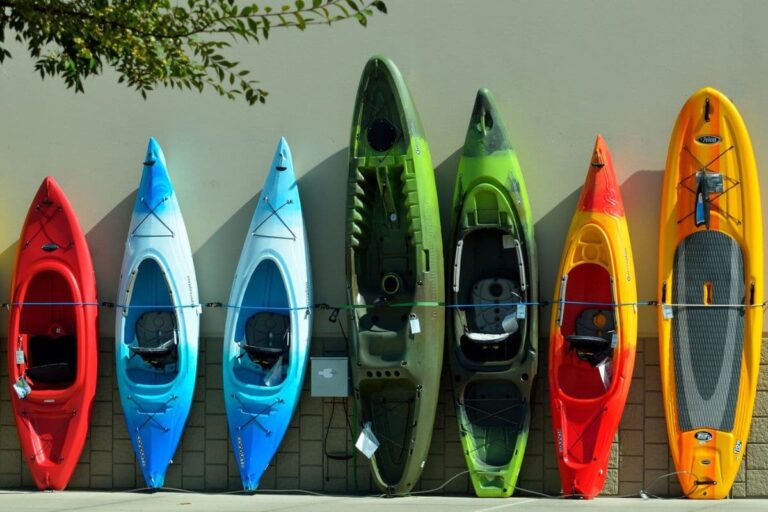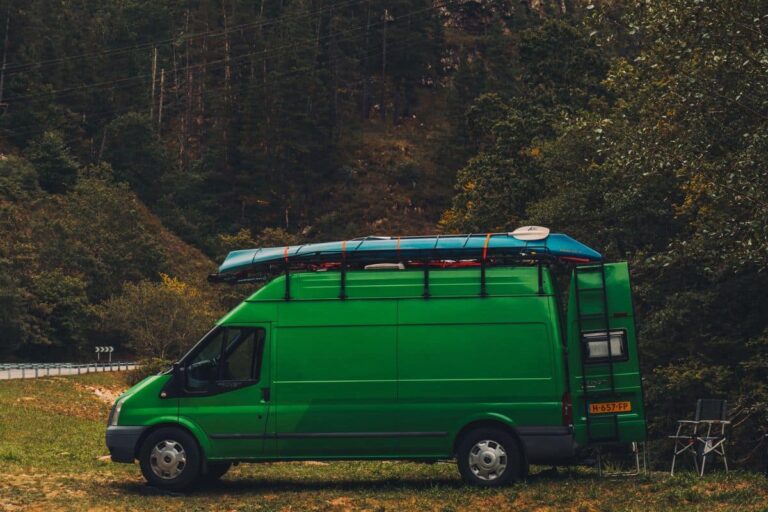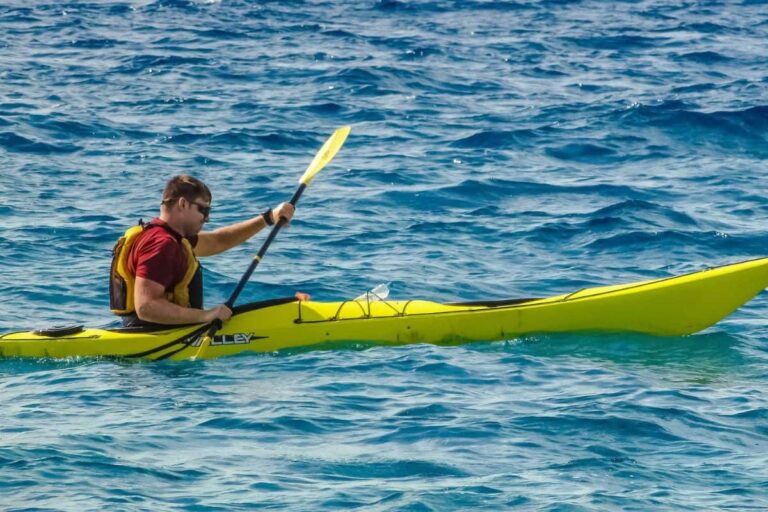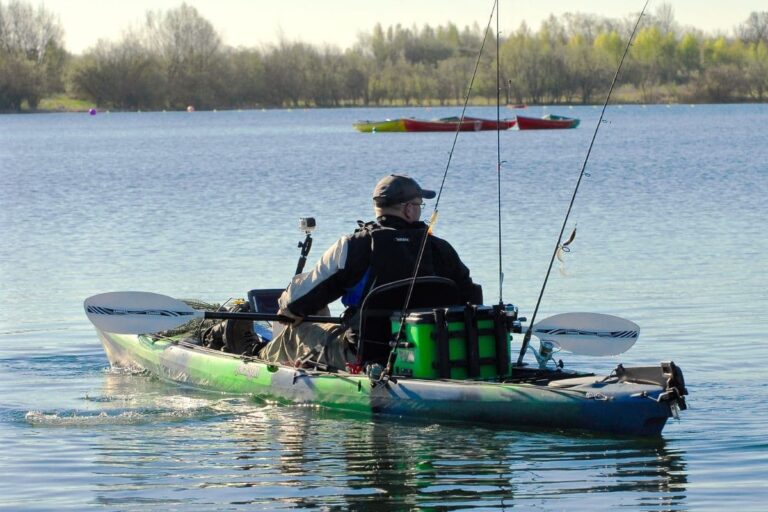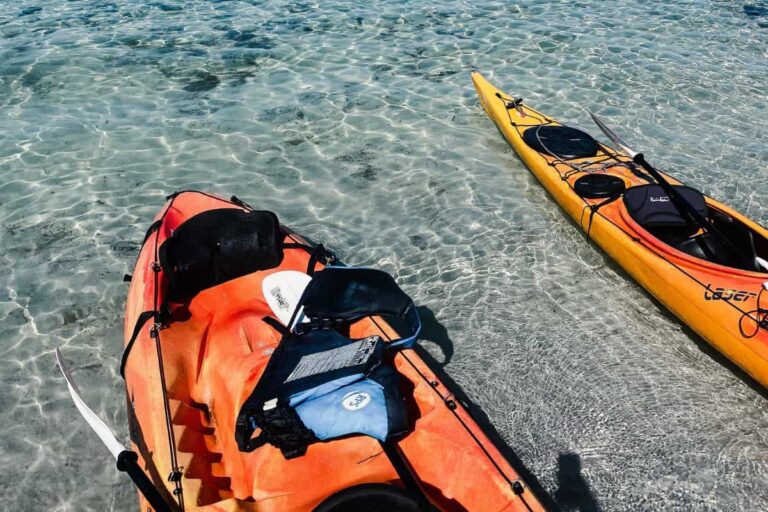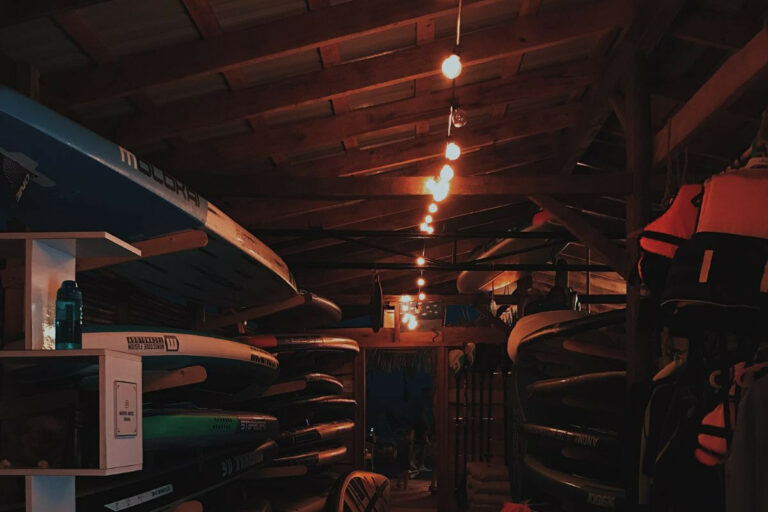58 Common Kayaking Terms You Need to Know
Kayaking is a lovely way to spend a day outside in nature. The clear water and breeze is enough to lull anyone into a relaxed mood.
Before you go kayaking, it’s important to familiarize yourself with a few common terms, including the different types of paddling techniques, equipment, technical terms, and water classifications.
Having a clear understanding of kayaking terminology will benefit you and help you have a more enjoyable experience on the water.
Braving the open water may seem like an overwhelming task at first, especially if you’re paddling a sea kayak.
This is why it’s imperative that you gain an understanding of general kayaking concepts and terminology, before heading out on the water.
The Most Common Kayaking Terms And What They Mean
In this article, we’ll run through the most commonly used kayaking terms, and provide an explanation of each one.
Kayaking Techniques – Terms
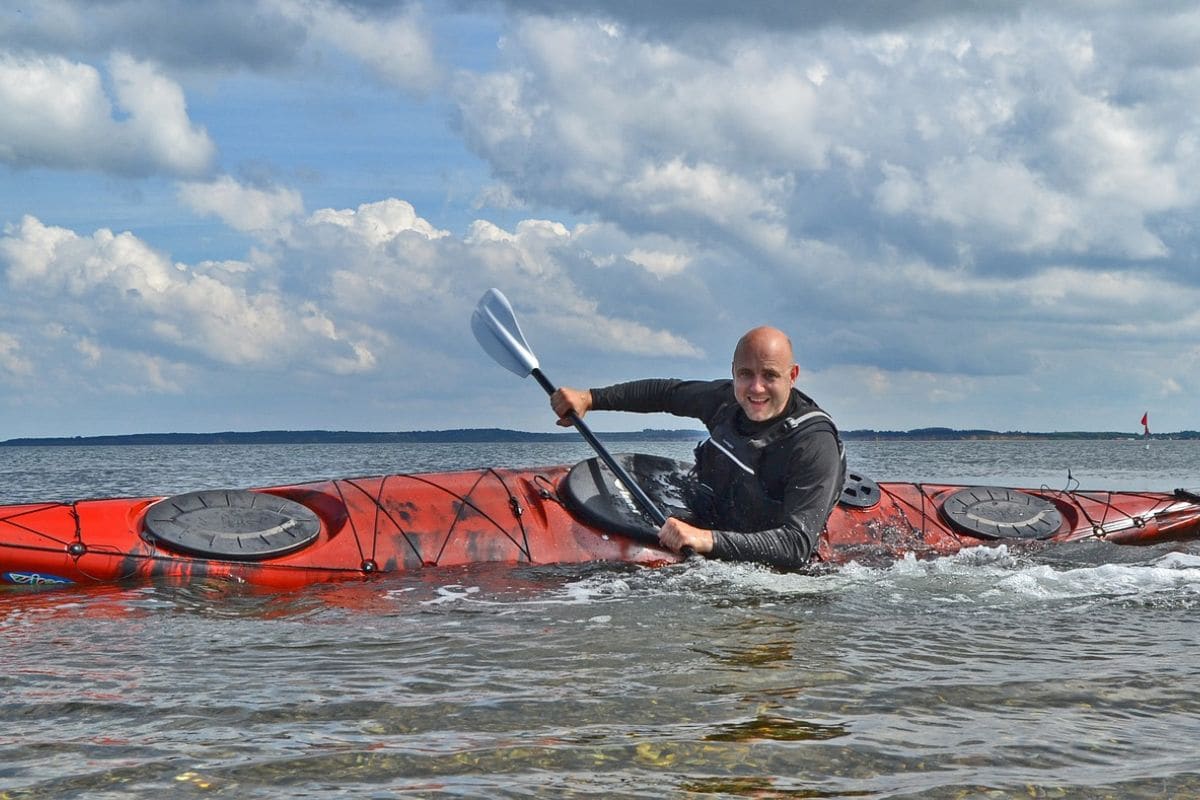
Back stroke: Refers to paddling backwards.
Bow draw: A more intermediate stroke, used to turn the boat at the bow.
Brace stroke: Helps correct a kayak if it feels like it’s about to capsize, and involves placing the paddle across the boat with the blades flat over the water.
To do this, you lean towards the side of the boat that’s tilting into the water, while slapping your paddle against the water while pushing your knee up against the cockpit.
This will help you shift the kayak into an upright position, and prevent your boat from capsizing.
Edge control: Refers to a paddler’s ability to maintain balance and control of the kayak.
Forward stroke: Using the paddle to propel the boat forward.
Eskimo roll: Involves correcting the kayak after you’ve capsized, without getting out of the boat.
To do this, lift your torso upwards, move your hips quickly to the right. and use your paddle to push yourself upright.
Reading water: The act of observing the water currents before going out in your boat.
Sculling draw: A figure eight stroke done with a paddle that pulls the kayak sideways.
Side draw: A paddle stroke in which you pull the blade towards yourself, which positions the kayak in the position toward which you’d like to go.
Sweep stroke: The most basic turning stroke used to turn a kayak.
To do this, you place the paddle in the water and, with a sweeping motion, pull the blade into the side of the boat.
Wet exit: The act of leaving a capsized kayak while you’re still in the water, because rolling it over is not possible.
Kayaking Technical Terms

Baja sleigh ride: When a fisherman’s kayak is dragged around the water in circles by a large fish.
Bent shaft paddle: An additional piece of equipment that kayakers use to keep their hands in neutral positions.
This is especially useful if you want to protect your wrists and avoid aggravating an injury.
Bow: The front part of the boat.
Bow lines: Used to ensure that your kayak is secure by tying it to the bow of your kayak to the dock or a vehicle.
Bulkhead: A vital part of your kayak – a protective layer inside the bow and stern of a kayak, which ensures that no water gets inside the body and protects anything you have inside of it, and also helps you correct your kayak if it flips in the water.
Cockpit: Where the paddler sits in the kayak.
Creek boats: Kayaks specifically designed with greater depth to make them more buoyant and easier to maneuver – these boats are ideal for whitewater kayaking.
Deck bungees: Flexible straps that are used to safely secure items to the kayak’s bow and stern.
Downriver boats: Also known as river running boats, and are a mix between creek boats and play boats.
They are fast boats that allow you to cruise comfortably in a straight line, but are also capable of performing some other moves.
Dry bag: A waterproof bag.
Drytop: A jacket specially designed to keep your upper body dry when on a kayak.
Float bags: Inflatable bags that keep your kayak afloat if your boat capsizes.
Foot braces: These are found in the kayak’s cockpit, and can be used to control the rudder (if your kayak has one).
Grab loops: Also called grab handles – they are essentially rope handles located on the kayak’s bow and stern.
Hatch: A storage compartment at the back of your kayak.
Paddle blade: One of the key components of kayaking – this is a flat, wide piece of material located at the end of the paddle, used to propel the boat forward and navigate in the water.
Play boat: A vessel with a flat, narrow end that is designed to tolerate being submerged in water, which makes it ideal for doing tricks.
These kayaks are called play boats because whitewater paddlers can use them while they “play” in turbulent waters.
Port: The left side of the kayak.
Personal flotation device: Also called a PFD, this is a life jacket that keeps you afloat if you capsize.
Primary and secondary stability: A kayak’s primary stability refers to how stable it is on calm water, when you first get on the boat.
A kayak’s secondary stability refers to how easily the boat can rectify when tilted.
Recreational kayaks: Also known as rec boats, these are designed for beginners and those who prefer to paddle on flat water.
River left and river right: The left or the right-hand side of the water, respectively, and also how kayakers refer to direction.
Roof racks: Metal bars you attach onto the roof of your vehicle to secure your kayak or other gear.
Rudder: A fin at the rear underside of the kayak which can be used to steer the kayak in the direction it needs to go.
The rudder is either operated by pulling rope lines or by foot pedals.
Shaft: The pole of the kayak paddle that connects the blade to the handle.
Shortie: A paddling jacket that has short sleeves.
Skeg: A steering fin that is adjustable and used to keep sea kayaks straight.
Spray skirt: A nylon skirt worn around a paddler’s waist that covers the opening of your kayak to prevent water from getting inside your cockpit.
Stackers: Accessories for a roof rack that allow you to load multiple kayaks onto one vehicle.
Tandem kayak: A two-person kayak, sometimes also called a double kayak.
Tow leash: A long piece of webbing that’s typically secured to the kayaker at the waist or to a rescue harness.
A tow leash is used to drag a kayak back to shore during a rescue or if the paddler is too tired.
Water sandals: Waterproof, non-slip shoes.
Water Classification While Kayaking
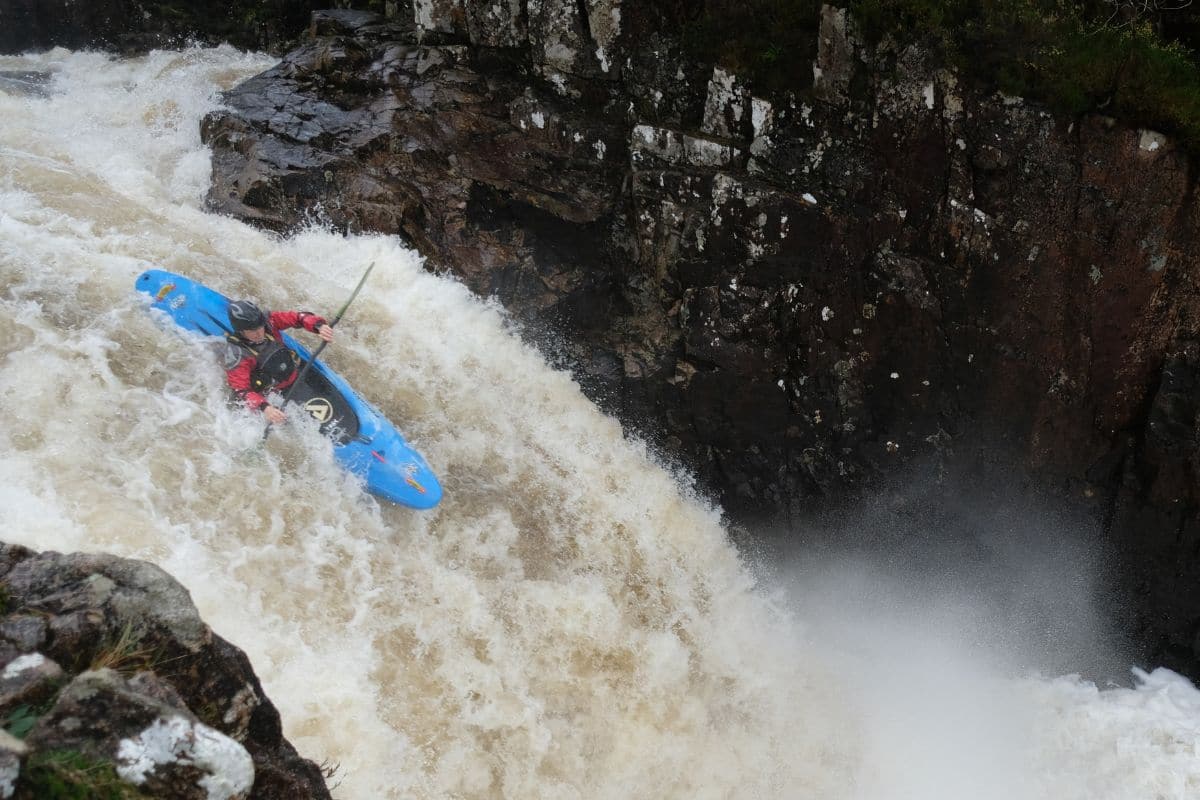
Note: In the U.S., the standard measurement of water flow is cubic feet per second (CFS).
Class A rapid: Completely calm water.
Class i rapid: Slightly more turbulent water that contains a few obstacles.
Class ii rapid: This water is faster and a bit more difficult to navigate.
Waves will rock the kayak in this type of water, so it’s better for intermediate kayakers to navigate here.
Class iii rapid: This water is trickier to navigate but not impossible.
Water passages will likely be narrower, and the water will run faster through them.
Class iv rapid: These water conditions are quite rough and difficult to navigate, usually caused by the currents and wind flowing in the opposite direction.
These rapids require a higher level of expertise, and should only be paddled by experienced sea kayakers.
You’ll need flotation bags attached to your kayak to safely make it through this type of water.
Class v rapid: These conditions warrant specific kayaking equipment and expertise in order to navigate them safely.
These rapids feature steep drop-offs, rough waters, and fast currents, and should only be attempted by a seasoned kayaker.
Class vi rapid: These conditions can only be safely navigated by professionals with extensive knowledge.
This is the most challenging type of water condition you can face while kayaking.
Downstream: The water of a river always flows in one direction: downstream.
Downstream V: The portion of the river that is open and free from obstacles, where a kayaker can enter into the river or choose to go downstream.
Eddy: Where the water current hits an obstacle in the water and flows back upstream.
Open water: Any body of water where there is no shoreline nearby.
Rapid: When the water current begins to move faster, which is usually when the incline of the river increases.
Riffles: Small rapids in more shallow water.
Upstream: The opposite direction of the way in which the water flows.
Whitewater: When flowing water mixes with air, which is usually found around rocks and other obstacles when you’re on a whitewater kayak.
Conclusion
Kayaking can be an exciting sport that intrigues the brave of heart.
But it is important to understand basic kayaking terms and familiarize yourself with the equipment that you will be using before setting off on your adventure.
This is essential, whether you’re in turbulent white waters, sea kayaking, or paddling recreational boats and touring kayaks.
Learning about these terms will allow you to have an optimal overall kayaking experience.
Table of Contents

